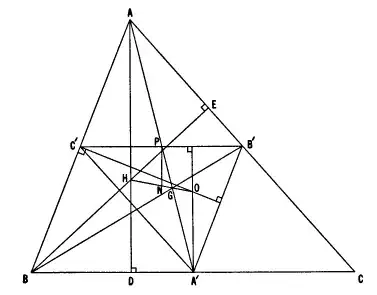I'm having some trouble on this exercise from Geometry Revisited:
On triangle $ABC$, the Euler line is parallel to $BC$. Prove that $\tan B \tan C = 3$.
Here is the solution given:

(in this context, $D$ is the base of the altitude from $A$, $O$ is the circumcenter, $A'$ is the midpoint of $BC$, and $R$ is the radius of the circumcircle)
I understand everything up to the last line. However, I do not understand how the line $OA'$ is related to the circumradius.
Why is $OA'= R \cos A$?


